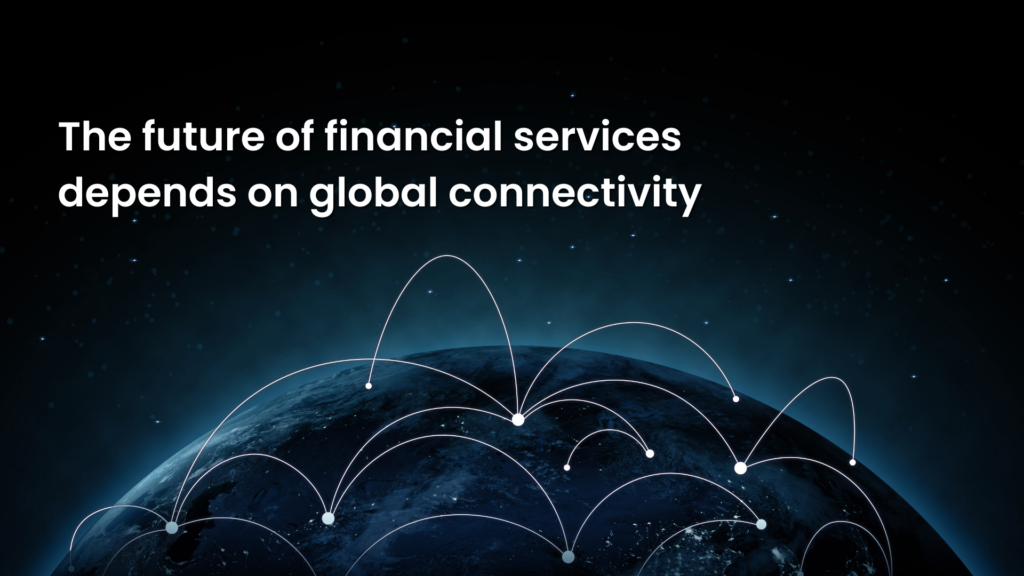FIN TECH
UPDATES
The future of financial services depends on global connectivity
Without a question, the last year has been fraught with difficulties. The pandemic’s aftermath, continued geopolitical tensions, and a rapidly globalising globe have required all businesses and industries, including financial services, to adapt.

Creating interoperability in global payments is a daunting challenge.At the same time, change’s headwinds have acted as a fuel for new kinds of money to emerge – the number of cryptocurrencies monitored by CoinMarketCap surpassed 22,000 in early December. According to the World Economic Forum, the tokenized assets market may be valued up to $24 trillion by 2027.
The development of money and customers’ evolving expectations are also informing the frameworks for how global payments are conducted. The G20 strategy for improving cross-border payments prioritises collaborative effort to make international payments quicker, more transparent, and more affordable.
While the financial services sector has shown remarkable resilience during these difficult times, there is still work to be done to ensure that these innovations can fit seamlessly into today’s financial environment.
Laying the groundwork
Payments are an excellent example. An emphasis on interoperability is critical to ensuring that the wave of digitization throughout the global payments sector reaches scale. This entails allowing participants to make payments across systems without having to connect to several systems. This emphasises collaboration, both at the market infrastructure and at the individual company level.
Innovating with a global mentality naturally emphasises the value of interconnectedness and diversity. On a practical level, interoperability emphasises the need for standards and organised governance that are implemented and adhered to across jurisdictions so that payments can flow easily across borders. Global collaboration is vital in all parts of financial services, but it is critical in payments.
Payments are, after all, the lifeblood of a linked world. However, innovation frequently occurs in isolated, confined regions. Many authorities or areas are digitising with a domestic focus.
The advent of real-time payment systems is a notable illustration of this fragmented globalisation. Different regional cross-border and multi-currency payment systems are evolving. Examples include the Buna initiative for the Middle East and Africa region; the IXB project, in which EBA Clearing and TCH want to connect the euro-denominated instant payment system, EURO1, and the dollar-denominated system, RTP, to execute instant, cross-border payments; and the Nexus project from the BIS Innovation Hub, which is designing a multi-lateral instant payment interlinking model.
However, in order to embrace the future of money, which is progressively becoming digital, we must focus on ensuring that the systems being used can interact smoothly with other systems, allowing countries to easily transact with one another.
Interoperability and innovation are inextricably linked
Aside from real-time payments, worldwide interoperability will be critical in assuring the effective implementation of many payment-related innovation initiatives. As the global payments ecosystem embraces digitalisation with the requirement for security and global connection, we are witnessing this firsthand.
This highlights the promising work being done in the areas of central bank digital currencies (CBDCs) and new digital assets. A variety of studies are presently underway to investigate how this new type of money may be incorporated into the global payments environment. The CBDC ecosystem is currently very fragmented, with multiple central banks building their own digital currencies based on various technologies, standards, and protocols.
In fact, nine out of 10 central banks are investigating the possibility of establishing a domestic CBDC. So the next stage is to examine how these various digital currencies may be utilised across global borders. Whether the future of CBDC-backed global payments comprises connection with existing payment systems or links between domestic digital currencies, interconnectedness will be the crux to success.
A worldwide effort
Creating interoperability in global payments is a daunting challenge. A careful balance must be achieved between collaboration and competition, encouraging new market participants while preserving a set of globally recognised norms. Central banks can help to catalyse a genuinely linked future, but they cannot do it alone. Many innovative ventures will require industry-wide effort and cooperation to scale up and last. This is why initiatives like the G20 roadmap for the future of cross-border payments are critical.
With 2023 likely to witness the realisation and development of many key initiatives in payments – in CDBCs and beyond – we must keep the goals of their development in mind. We can go far with this purpose-driven, collaborative approach